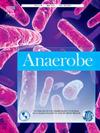恶性肿瘤患者艰难梭菌感染检测及危险因素分析。
IF 2.6
3区 生物学
Q3 MICROBIOLOGY
引用次数: 0
摘要
目的:探讨恶性肿瘤患者艰难梭菌感染(clostridiides difficile, CDI)的危险因素,建立临床预防和早期干预的预测模型。方法:回顾性分析我院收治的92例恶性肿瘤患者(46例cdi阳性,46例cdi阴性)。收集和分析患者的人口学特征、临床参数、实验室指标和治疗因素。采用单因素和多因素logistic回归分析,确定CDI的独立危险因素,建立预测模型并采用受试者工作特征曲线分析进行评价。结果:CDI患者血清白蛋白水平(30.12±5.86 vs 34.15±7.88 g/L, P = 0.007)明显低于无CDI患者,c反应蛋白(CRP)水平(89.38±91.01 vs 49.17±51.78 mg/L, P = 0.011)明显高于无CDI患者。cdi阳性组多种抗生素使用率(52.2% vs 10.9%, P < 0.001)和皮质类固醇/免疫抑制剂使用率(58.7% vs 30.4%, P = 0.007)均显著高于cdi阴性组。多因素logistic回归分析确定了CDI的四个独立危险因素:多种抗生素使用(优势比[OR] = 7.56, 95%可信区间[CI]: 2.41 ~ 23.73, P < 0.001)、皮质类固醇/免疫抑制剂使用(OR = 2.81, 95% CI: 1.08 ~ 7.32, P = 0.035)、血清白蛋白(每g/L增加:OR = 0.94, 95% CI: 0.88 ~ 1.00, P = 0.049)和CRP(每mg/L增加:OR = 1.01, 95% CI: 1.00 ~ 1.01, P = 0.047)。多元预测模型具有良好的判别能力(曲线下面积= 0.907)。结论:多种抗生素使用、皮质类固醇/免疫抑制剂治疗、低白蛋白血症和CRP升高是恶性肿瘤患者CDI的独立危险因素。本研究建立的预测模型可能有助于识别高危患者,哪些患者可以从预防干预中获益。本文章由计算机程序翻译,如有差异,请以英文原文为准。
Detection and risk factor analysis of Clostridioides difficile infection in patients with malignant tumours
Objective
To identify risk factors for Clostridioides difficile infection (CDI) in patients with malignant tumours and establish a predictive model for clinical prevention and early intervention.
Methods
This retrospective study included 92 patients with malignant tumours (46 CDI-positive, 46 CDI-negative) admitted to our hospital. Demographic characteristics, clinical parameters, laboratory indicators and treatment factors were collected and analyzed. Univariate and multivariate logistic regression analyses were performed to identify independent risk factors for CDI, and a predictive model was established and evaluated using receiver operating characteristic curve analysis.
Results
Patients with CDI had significantly lower serum albumin levels (30.12 ± 5.86 vs 34.15 ± 7.88 g/L, P = 0.007) and higher C-reactive protein (CRP) levels (89.38 ± 91.01 vs 49.17 ± 51.78 mg/L, P = 0.011) than patients without CDI. The CDI-positive group had significantly higher rates of multiple antibiotic use (52.2 % vs 10.9 %, P < 0.001) and corticosteroid/immunosuppressant use (58.7 % vs 30.4 %, P = 0.007) than the CDI-negative group. Multivariate logistic regression analysis identified four independent risk factors for CDI: multiple antibiotic use (odds ratio [OR] = 7.56, 95 % confidence interval [CI]: 2.41–23.73, P < 0.001), corticosteroid/immunosuppressant use (OR = 2.81, 95 % CI: 1.08–7.32, P = 0.035), serum albumin (per g/L increase: OR = 0.94, 95 % CI: 0.88–1.00, P = 0.049) and CRP (per mg/L increase: OR = 1.01, 95 % CI: 1.00–1.01, P = 0.047). The multivariate predictive model demonstrated excellent discriminative ability (area under the curve = 0.907).
Conclusion
Multiple antibiotic use, corticosteroid/immunosuppressant therapy, hypoalbuminaemia and elevated CRP are independent risk factors for CDI in patients with malignant tumours. The predictive model established in this study may help identify patients at high risk who could benefit from preventive interventions.
求助全文
通过发布文献求助,成功后即可免费获取论文全文。
去求助
来源期刊

Anaerobe
生物-微生物学
CiteScore
5.20
自引率
8.70%
发文量
137
审稿时长
76 days
期刊介绍:
Anaerobe is essential reading for those who wish to remain at the forefront of discoveries relating to life processes of strictly anaerobes. The journal is multi-disciplinary, and provides a unique forum for those investigating anaerobic organisms that cause infections in humans and animals, as well as anaerobes that play roles in microbiomes or environmental processes.
Anaerobe publishes reviews, mini reviews, original research articles, notes and case reports. Relevant topics fall into the broad categories of anaerobes in human and animal diseases, anaerobes in the microbiome, anaerobes in the environment, diagnosis of anaerobes in clinical microbiology laboratories, molecular biology, genetics, pathogenesis, toxins and antibiotic susceptibility of anaerobic bacteria.
 求助内容:
求助内容: 应助结果提醒方式:
应助结果提醒方式:


